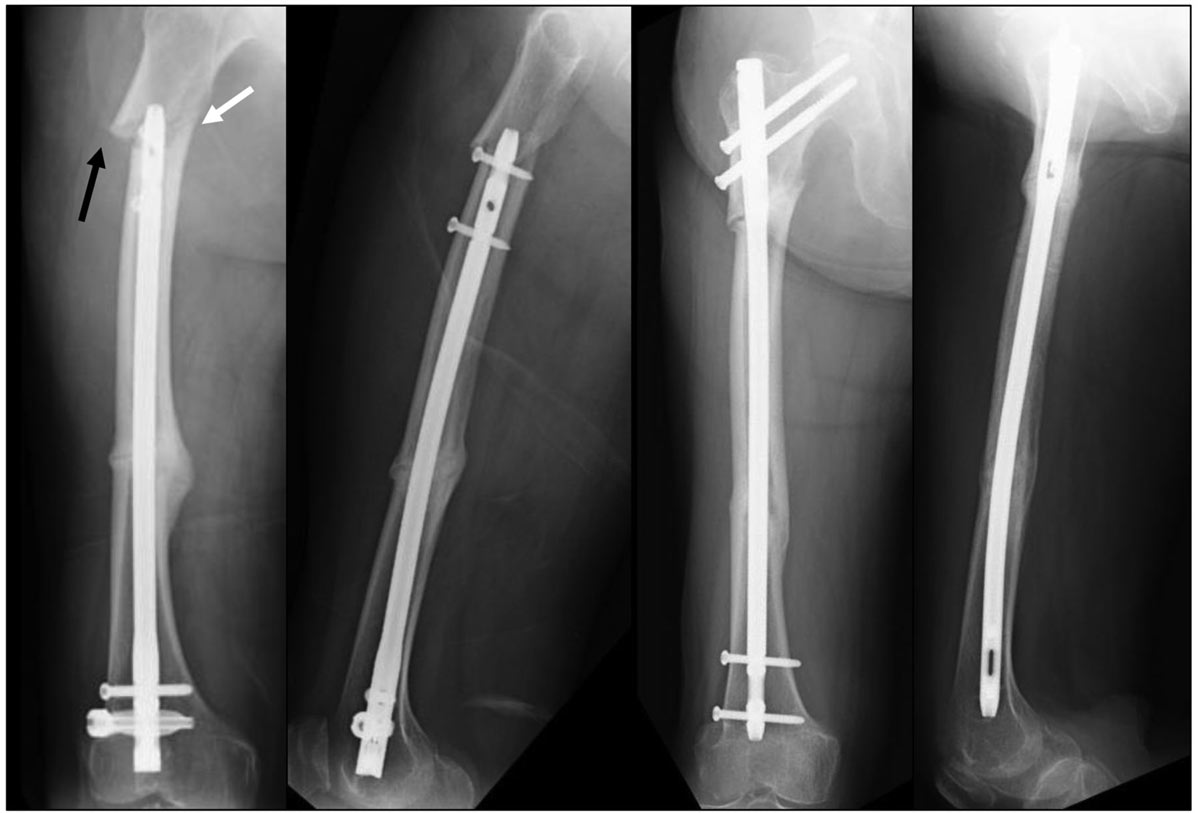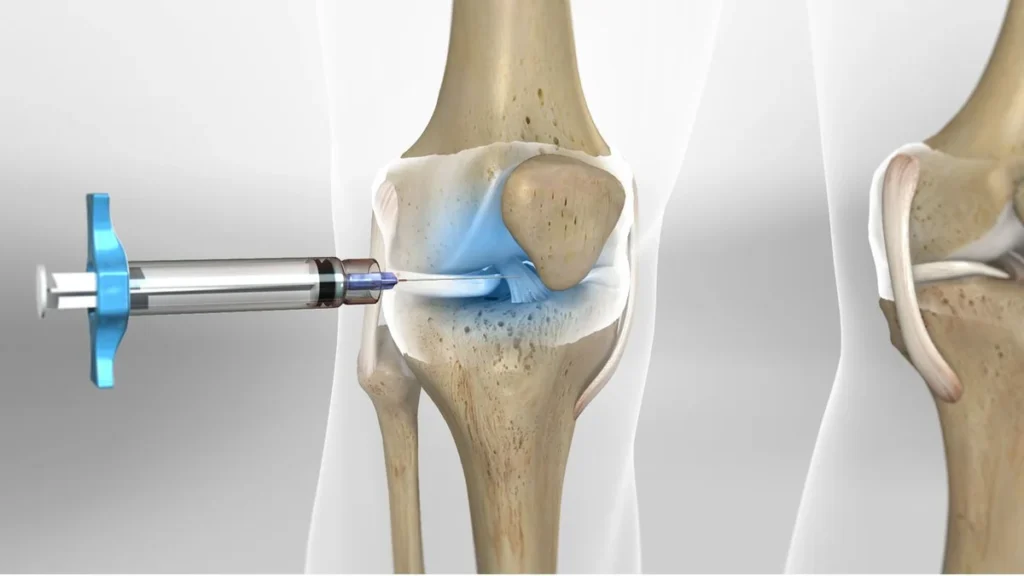Misconception About ‘Platinum’ in Medical Context
In this article, we talk about Can Platinum Cause Infection in the Leg? Firstly, it’s important to know that what is commonly referred to as “platinum” in patients’ lower legs is, in reality, titanium or stainless steel. The term ‘platinum’ is mistakenly used for these materials.

- Misconception About 'Platinum' in Medical Context
- Internal Bone Rods for Fracture Stabilization
- Rapid Recovery and Potential Issues
- Does Platinum Cause Infection in the Leg?
- Types of Metal Implants
- Complications of Platinum in the Leg
- Symptoms of Platinum Infection in the Leg
- Complications of Platinum in the Thigh
- The Relationship Between Metals Used in Implants, Platinum Infection, and Cancer
- Conclusion
Internal Bone Rods for Fracture Stabilization
Internal bone rods are used for stabilizing bone fractures. These rods are inserted into the bone marrow canal at the center of the long bones in the limbs, such as the thigh or lower leg bones. A significant advantage of these rods over other stabilization methods is that they bear a portion of the pressure instead of fully supporting the bone.
Rapid Recovery and Potential Issues
Patients are usually able to quickly use their lower limbs after such procedures. However, metal rods are not always suitable for all fractures, and patients often complain about pain and symptoms related to the rod’s insertion site. These rods are designed to remain permanently in the bone, but if painful symptoms occur, further surgery might be required to remove them.
Does Platinum Cause Infection in the Leg?
To answer whether platinum can cause infection in the leg, it should be noted that surgeons usually prefer to remove unnecessary metal implants. Patients with screws, pins, or metal plates in their bodies are closely monitored and examined. The removal of these implants is usually done only in exceptional and necessary cases. Additionally, bone growth can make the removal of stabilizing plates quite difficult.
Types of Metal Implants
Titanium, as an alternative to stainless steel in bone stabilization devices, is well-accepted due to its higher compatibility with the human body and lesser likelihood of causing bodily reactions. In cases of inflammatory response, it’s usually mild, limited, and non-permanent. By combining titanium with other metals like cobalt, chromium, and molybdenum, lighter yet stronger materials can be created. Currently, extensive research is underway to develop absorbable devices for bone fixation.

To make an appointment or get an online consultation with Dr. Nader Motallebi Zadeh, Limb lengthening surgeon, proceed here.
Complications of Platinum in the Leg
One potential issue with using titanium in bone implants is the risk of titanium particle residue. Small pieces of this metal might detach, enter the bloodstream, and settle near soft tissues or joints. Although both titanium and stainless steel particles are found near these areas, titanium particles are observed more frequently and in more individuals. When an implant rubs against another surface, the likelihood of metal particle formation increases, a phenomenon also known as corrosion.
Symptoms of Platinum Infection in the Leg
Another question is what the symptoms of platinum infection in the leg are. Animal studies have shown that these implants can affect the immune system. Most platinum leg infections are not solely due to the device itself; factors like underlying diseases such as diabetes, kidney failure, immunosuppressive medications, surgical techniques, and rare contamination in the operating room play a more significant role in infection development.
Some studies have indicated that metal implants might increase the activity of certain white blood cells (lymphocytes). This condition could potentially weaken or hinder the implants in treating fractures, though these claims have not yet been scientifically proven.
Complications of Platinum in the Thigh
Plates made from implants are used to reinforce fractures. These devices are used for stabilizing fractures in the arm, forearm, pelvis, thigh, and lower leg.
After fracture consolidation, the forces exerted on the bone continue to be absorbed by the plate to prevent the bone from experiencing external pressure for an extended period.
Factors like prolonged bed rest in individuals or reduced gravitational effects in astronauts may cause osteoporosis. Therefore, leaving a plate in the limbs for an extended period could lead to bone porosity.
Complications from plates in the thigh and lower leg are more common, while they are less observed in the pelvis, arm, and forearm. Therefore, after the healing and stabilization of fractures, the plates in the thigh and lower leg are usually removed after a period of one and a half to two years.
The Relationship Between Metals Used in Implants, Platinum Infection, and Cancer
Potential Cancer Risk from Metal Particles and Platinum Infection
The question arises whether metal particles and platinum infection in the lower leg can lead to cancer. Research on mice has shown that metal particles can potentially cause cancer by damaging chromosomes. However, this has not been confirmed in humans, and these implants have been safely used in humans for many years. Yet, a definitive answer to this question has not been provided.
Studies on Metal and Titanium Rods in Bones
Studies indicate that placing metal or titanium rods within bone may significantly increase the presence of metal particles in the bloodstream. It’s evident that chromium, compared to other metals, releases a greater amount of these particles.
Titanium Levels in Blood Tests
The titanium rods placed inside bones can increase the level of titanium detected in blood tests. However, this level is not as high as that of chromium.
Conclusion
This concludes the article on whether platinum can cause infection in the leg. If you have any questions regarding platinum infection or the effects of platinum remaining in the leg, feel free to ask.

To make an appointment or get an online consultation with Dr. Nader Motallebi Zadeh, Limb lengthening surgeon, proceed here.
Titanium Exposure from Internal Bone Rods
Part of the internal bone rods can expose the bone to titanium, subsequently increasing the metal’s level in the blood. Gradually removing titanium implants can reduce its concentration in the blood and soft tissues. However, returning these levels to normal may take a year or more.



